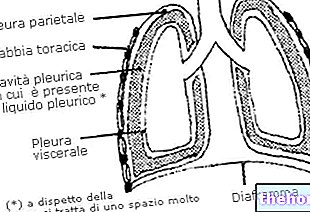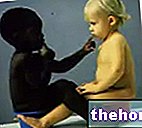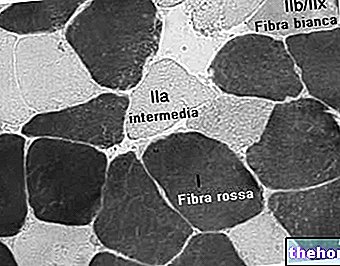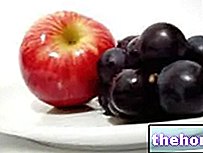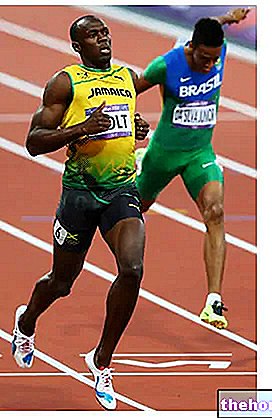The intermediate muscle fibers are polymers of muscle cells which, thanks to their characteristic adaptability to effort, can be specialized by acquiring more aerobic (oxidative) or anaerobic (anaerobic glycolysis and creatine kinase) metabolic characteristics.
Specializing the intermediate muscle fibers means orienting the training stimulus based on the results to be obtained; taking into consideration training with overloads, the specialization can evolve:
- in the oxidative direction increasing the duration and reducing the intensity
- in the glycolytic-anaerobic direction, increasing the intensity and reducing the duration.

Genetics of the motor unit and performance variability of intermediate fibers
In sports it is common to hear an "old saying" from the trainers: "With "training, a sprinter CAN" become a cross-country runner ... but it is by no means certain that a cross-country runner can become a sprinter!'
This concept is NOT absolute, but it is a "statement certainly supported by many factors, the most important of which is GENETICS. Each of us has a well-determined" muscle project "and responds effectively (to a stimulus rather than to" other) on the basis of the prevalence of the different motor units: motor neuron + muscle fibers (see the dedicated article Motor units of muscles - white fibers and red fibers).
We already know the biochemical characteristics of the DIFFERENT muscle fibers ... but what do motor neurons enter? There are different types and in practice they differ in terms of cross section of the axon which affects the SPEED of impulse conduction. In practice, the motor unit with red fibers is innervated by a motor neuron with a narrow section (slow), while the corresponding motor unit with white fibers has a motor neuron with a large section (fast).
Looking at what has been written so far, the reader could understand that the genetic predisposition to the dominance of one motor unit over the others (fast with white fibers or slow with red fibers) constitutes the only variable that determines the success or failure of a sportsman in the various disciplines; in reality (and fortunately), even this concept is only partially acceptable.
Leaving aside for a moment the "importance of the SPECIFICITY" of training, let's analyze in more detail another variable capable of determining the muscular predisposition and the potential improvement of a sportsman towards his favorite physical activity: the intermediate fibers. metabolic view, the intermediates are real "wild cards" able to direct energy production towards "aerobiosis or" anaerobiosis; it is clear that a high percentage of these fibers determine is great athletic potential that an "extreme athletic flexibility.
Definitely: "it is by no means certain that a cross-country skier can become a sprinter!", but if his red fibers are largely made up of specialized intermediate fibers, modifying the training, there is a good chance that he can get good results even in strength and speed disciplines. Let me be clear, sometimes the muscular predisposition is quite evident even just by "observing" the morphology and the anthropometric phenotype of the subject; a 60kg long-distance runner will hardly become an elite 100 meter runner ... but this does not exclude that many endurance athletes can find satisfaction even in intermediate duration disciplines (such as short middle distance).
Intermediate fibers - how to specialize the metabolism
The first (antediluvian!) Classification used to categorize muscle fibers is the "chromatic" one: red fibers and white fibers; subsequently, given the discovery of the intermediate fibers, the numerical solution was proposed: type I (red), type IIA (white - intermediate) and type IIB (white). Further expanding the biochemical and structural knowledge of muscle cells, the fibers were further cataloged using other differentiation criteria:
- Contraction speed: Slow and Fast (slow [S] and fast [F])
- Energy metabolism: Oxidative and Glycolytic (oxidative [O] and glycolytic [G]
Intersecting these two characteristics it is possible to distinguish THREE types of cells:
- SO - slow oxidative red fibers
- FOG - intermediate white glycolytic / oxidative fibers
- FG - fast glycolytic white fibers
The peculiarity of FOG lies in the potential for adaptation; themselves contain good amounts of glycolytic enzymes, glycogen, oxidative enzymes, mitochondria and capillaries. Furthermore, they are innervated by motor neurons with a medium-low conduction speed (medium-small axon), they produce an intermediate voltage but have medium-high speed of contraction and resistance.
To specialize the intermediate fibers it is necessary to carry out a specific training that directs the metabolism towards the desired one. Through the right stimulus, the intermediate fibers can acquire:
- a greater anaerobic enzyme pool, with greater reserves of glycogen and creatine phosphate (energy substrates characteristic of lactacid and alactacid metabolisms)
- or a set of aerobic-oxidative catalysts associated with several mitochondria, myoglobin and vascularization capillaries.
In short, the intermediate fibers change together with training and can act synergistically with those SO in endurance sports, synergistically with those FG in sprinters or synergistically with both in mixed sports.
Example of specialization of the intermediate fibers in a runner
Subject: 100 meter runner
Objective: increase of pure strength
Instruments: overloaded
A centometrist who aims at maximizing running speed must necessarily increase the pure muscle strength of the lower limbs (nerve conduction, fiber recruitment, intramuscular and intermuscular coordination, hypertrophy). The preferred methodology foresees the execution of heavy gymnastics (exercises with overloads) to be subsequently transformed into the specific athletic gesture. In the gym, the sprinter will perform exercises such as the "squat" in more or less large series but NEVER exceed 12-15 repetitions; the recovery MUST be total or subtotal. In this way, in addition to enhancing the effectiveness and efficiency of the FG fibers, it is possible to specialize the FOG fibers in anaerobic metabolism (lactacid with many repetitions and / or alactacid with few repetitions and large recoveries) Recall that in the development of pure strength the intermediate fibers will participate significantly, very close to the metabolism of the FG fibers, but will NEVER be able to equal them in "effectiveness" due to the difference in conductivity of the dedicated motor neuron (slower in the intermediate).
Metabolic conversion of the runner:
Subject: 100-meter runner who engages in prolonged middle distance
Objective: to increase endurance and aerobic power
Tools: running
Our centometrist decides to try his hand at the middle distance run, specifically the 10,000 meters. Although the world record is close to 26 minutes, for a "mere mortal" this discipline exceeds 30 minutes in duration and, while boasting a certain LACTACID component, it also needs a good anaerobic threshold. The effort is mainly aerobic but located above the anaerobic threshold; in order to convert the intermediate fibers to oxidative metabolism, the runner will have to abandon the exercises of maximum strength and mass to make room for exercises on a specific run. In particular, the future 10,000meter will have to perform medium-length repetitions (above the anaerobic threshold) to develop oxidative mechanisms to the maximum without losing the ability to produce lactic acid and resist its accumulation. In this case it is better to leave out the short repetitions which, on the contrary, would have been more suitable for the opposite conversion, that is of a marathon runner at middle distance.

